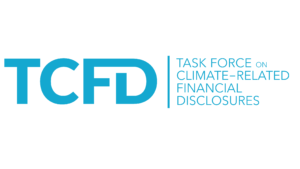The Taskforce on Climate-related Financial Disclosures (TCFD) developed a reporting framework based on a set of consistent disclosure recommendations, as a means for supporters to provide transparency about their exposure to climate-related risks.
NILGOSC became an official TCFD supporter in June 2020. Since then, reporting against the recommendations has become part of the regulatory framework in the UK (amongst many other countries) coming into force for Occupational Pension Schemes in the UK in 2021. The consultation for equivalent regulations for Local Government Pension Schemes in England and Wales ended last month, and is expected to come into force shortly as part of the growing global effort to address climate change.
Full implementation of the TCFD reporting framework can take many years, with learnings along the way which help reporting bodies adapt and optimise disclosures. Therefore, NILGOSC’s publication of its second report (for the year ended 31 March 2022) builds upon the context and disclosure provided for the prior year, helping NILGOSC get ahead of the regulatory curve.
NILGOSC’s report for the year ended 31 March 2022 is available to review: Climate-related Disclosures Report.
Working alongside a third-party provider, it was possible to analyse just under 50% of the Fund’s holdings at financial year end (primarily composed of NILGOSC’s active and passive equity holdings). The portion of the Fund that could be measured, compared very favourably to the benchmark comparison (MSCI All Country Word Index): with the total holdings emitting 77% less carbon dioxide equivalents on an absolute emissions level; and reporting a 67% lower weighted average carbon intensity (WACI) than the index. The primary reason for the Fund’s considerable reduction in carbon emissions as compared to benchmark and when compared to the prior year, is the transition of £2.8 billion of passive equities from multiple mandates tracking various global indices, to one which tracks only the climate-tilted ‘Solactive L&G Low Carbon Transition Developed Market’ index. Despite the good news, the figures should be understood within the context that: NILGOSC is a diversified asset owner with investment over many asset classes and geographies, much of which could not be analysed; and the data is extracted from estimated sources, as well as reported information. Adopting the recommendations is an iterative process and full implementation can take many reporting cycles. For example, in a progression from its inaugural disclosures of the previous year, NILGOSC’s 31 March 2022 report included forward-looking metrics for the first time.
NILGOSC is pleased to have continued voluntarily reporting in line with TCFD recommendations and will continue to use its reporting to identify gaps and areas to focus on going forward.



